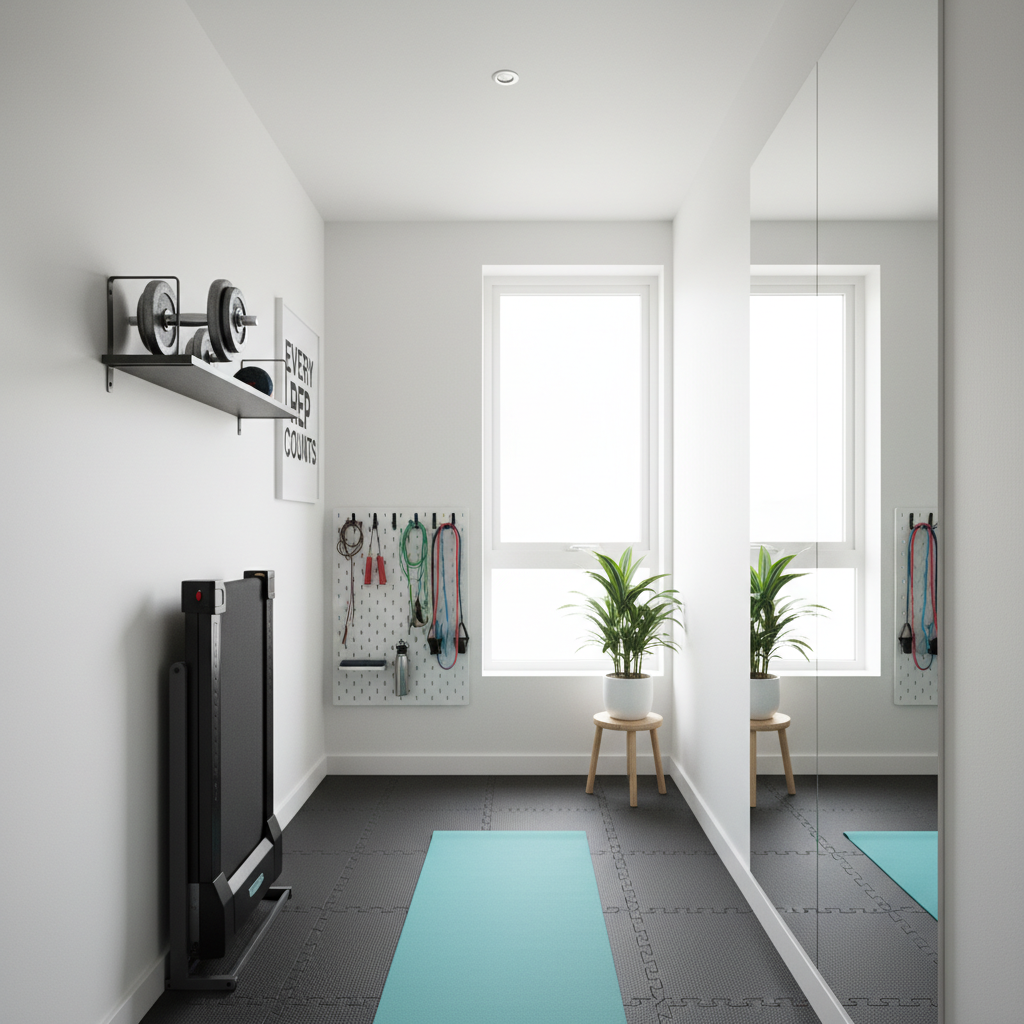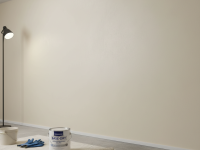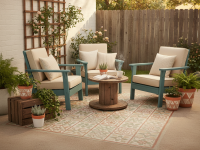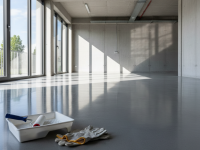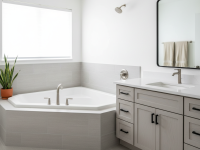Ever looked at that narrow spare room, perhaps an old storage closet or a forgotten corner, and sighed? You dream of having your own home gym, a private sanctuary to crush your fitness goals, but the sheer lack of space seems like an insurmountable barrier. Well, my friend, let me tell you a little secret: a narrow room isn’t a limitation; it’s an opportunity for clever design! You absolutely can build a functional, motivating, and surprisingly spacious-feeling home gym, even in the tightest of spots. And guess what? I’ve been there, wrestled with the exact same challenge, and found some fantastic solutions that I’m thrilled to share with you.
Gone are the days when you needed a sprawling basement or a dedicated garage bay for a proper home gym. With a bit of strategic plaing, smart equipment choices, and a dash of creativity, that seemingly impossible narrow room can become your personal fitness powerhouse. In this article, we’re going to dive deep into transforming those cozy confines into a place where you’ll genuinely love to sweat. We’ll explore everything from picking the right gear to making the room feel bigger than it is, all while keeping your budget and safety in mind.
Understanding Your Space: The First Step to Success
Before you even think about buying a single dumbbell, the absolute first thing you need to do is become intimately familiar with your space. This sounds obvious, but you’d be surprised how often people skip this crucial step!
-
Measure Everything, and Then Measure Again:
Grab a measuring tape and note down the length, width, and most importantly, the height of your room. Don’t forget to measure the dimensions of any doors, windows, and the distance to electrical outlets. This will dictate what equipment can realistically fit and where.
-
Consider the “Flow” and Obstacles:
Are there any awkward alcoves, radiators, or built-in shelves? How do doors open? You need enough clearance for movement, not just for the equipment itself but for you to safely use it. I learned this the hard way trying to swing a kettlebell and nearly taking out a light fixture!
-
Natural Light and Ventilation:
A window is a huge asset for both light and airflow. If you don’t have one, consider how you’ll manage lighting and ensure fresh air, especially during intense workouts. Nobody wants a stuffy, dark dungeon for a gym.
Smart Equipment Choices: Less is More (and Smarter!)
This is where the magic happens for narrow spaces. You can’t just drop a massive multi-station machine in there. The key is multi-functional, compact, and often foldable equipment. Think like a minimalist who loves to work out!
-
Adjustable Dumbbells: Your New Best Friend
Instead of a rack of 10 pairs of dumbbells, a single set of adjustable dumbbells can replace an entire weight range. Brands like Bowflex, PowerBlock, or even simpler spin-lock models are game-changers for saving floor space. Seriously, this is probably the single best investment for a small gym.
-
Resistance Bands and TRX Systems: The Ultimate Space-Savers
These are incredibly versatile, take up virtually no space, and can provide a full-body workout. Resistance bands come in various strengths and can be used for everything from warm-ups to strength training. A TRX system (or similar suspension trainer) can be anchored to a doorframe or ceiling, allowing you to perform a massive array of bodyweight exercises.
-
Foldable Cardio Equipment: Treadmills and Bikes
Yes, foldable treadmills and exercise bikes exist, and they’ve come a long way in terms of stability and features. Look for models that fold vertically and have wheels for easy storage wheot in use. It’s an investment, but a worthwhile one if cardio is a priority.
-
Wall-Mounted Solutions: Pull-Up Bars and Folding Racks
A sturdy, wall-mounted pull-up bar is fantastic for upper body and core work. If you’re into strength training, some companies offer wall-mounted squat racks that fold flat against the wall wheot in use. This frees up precious floor space when you’re doing other exercises or just need the room back.
-
Bodyweight Essentials: Mat, Stability Ball, Jump Rope
Don’t underestimate the power of bodyweight exercises. A good quality yoga mat, a stability ball (which can double as a chair!), and a jump rope are fundamental and take up minimal space. They’re perfect for warm-ups, cool-downs, core work, and high-intensity cardio.
Layout & Zoning: Creating Functional Zones
Even in a narrow room, you can create a sense of distinct zones. This helps with organization and makes the space feel more intentional.
-
Vertical Space Utilization: Go Up!
Think upwards. Wall-mounted shelves, pegboards, and vertical storage racks are your best friends. Store smaller items like resistance bands, jump ropes, and towels on hooks or shelves. A pegboard is brilliant for customizable storage of various accessories.
-
Mirror Placement: More Than Just Form Check
Installing a large mirror on one of the longer walls serves multiple purposes. Firstly, it helps you check your form, which is crucial for preventing injuries. Secondly, and perhaps more importantly for narrow rooms, it creates an illusion of depth and makes the space feel significantly larger and brighter. It literally doubles the visual space!
-
Designate Your Workout Zone:
Even if it’s just a 3×6 foot area, try to keep a central, uncluttered space for your main exercises. This allows you to move freely without bumping into equipment or furniture. My owarrow gym has a dedicated spot for my mat where I know I can do planks or lunges without obstacles.
-
Clear Pathways:
Ensure you have clear pathways to enter and exit the room, and to access any equipment you’ll be using. Safety is paramount, and tripping over a dumbbell is not a good workout.
Storage Solutions: Keeping Clutter at Bay
In a small space, clutter can quickly turn your motivating gym into a stressful storage room. Smart storage is non-negotiable.
-
Wall-Mounted Shelves and Hooks:
As mentioned, these are fantastic for getting items off the floor. Use them for smaller weights, foam rollers, resistance bands, and even a small speaker. Hooks are great for towels or your workout attire.
-
Under-Bench/Under-Equipment Storage:
If you have a foldable bench, consider storing smaller items underneath it when it’s folded. Even a low-profile rolling cart can slide under a desk or shelf wheot in use, holding items like wrist wraps or a skipping rope.
-
Integrated Storage:
Some equipment, like certain exercise bikes, come with built-in storage for water bottles or small accessories. Look for these clever integrations when buying.
-
Over-the-Door Organizers:
If your room has a door that’s not constantly being used for entry/exit during your workout, an over-the-door organizer can be brilliant for storing things like resistance bands, towels, or even a small first-aid kit.
The Ambiance Factor: Making It Motivating
A functional gym is great, but a *motivating* gym is what keeps you coming back. Don’t underestimate the power of atmosphere, especially in a small space.
-
Lighting: Brighten Up Your Mood
Good lighting is crucial. If natural light is scarce, invest in bright, perhaps even adjustable, LED lights. Avoid harsh, yellow light. Bright, clean light can make a small room feel larger and more energetic. I personally prefer cooler light temperatures for workouts.
-
Color Scheme: Choose Wisely
Lighter colors on the walls will make the room feel more expansive and open. You can add pops of vibrant color through accessories (like a bright yoga mat or resistance bands) for energy. Avoid dark, heavy colors that can make the room feel cramped.
-
Mirrors (Again!):
Beyond checking form, a mirror significantly enhances the feeling of space and reflects light, making the room brighter and more inviting.
-
Music and Sound:
A good quality Bluetooth speaker is a must. Music can dramatically boost your mood and motivation during a workout. Consider noise-canceling headphones if you live with others or want to really zone in.
-
Ventilation: Keep it Fresh
A small fan or simply keeping a window open (if possible) is essential for air circulation. Stale air can quickly make a workout uncomfortable and demotivating.
-
Personal Touches:
Add a small plant (snake plant or ZZ plant are great for low light and purifying air), a motivational poster, or a small clock. These details make the space feel like *yours* and more inviting.
Safety First: Essential Considerations
No matter how small your space, safety should always be your top priority. You don’t want to turn your quest for fitness into an injury.
-
Proper Flooring:
Invest in interlocking foam tiles or rubber mats. These protect your floor, provide cushioning for joints, and offer better grip, especially if you’re doing plyometrics or lifting weights. They also help absorb sound.
-
Adequate Clearance:
Always ensure you have enough space around your equipment for safe movement. Don’t cram things so tightly that you risk hitting yourself or the walls.
-
Secure Wall Mounts:
If you’re installing anything wall-mounted (pull-up bar, folding rack, shelves), make absolutely sure it’s securely anchored into studs or with appropriate heavy-duty anchors. Your safety depends on it.
-
First Aid and Hydration:
Keep a small first-aid kit nearby. And always have a water bottle within reach. Staying hydrated is non-negotiable.
So, there you have it! Transforming that narrow spare room into a functional and inspiring home gym isn’t just a pipe dream; it’s entirely achievable with a bit of savvy plaing. Forget the excuses about lack of space. Instead, embrace the challenge, get creative with your choices, and design a fitness haven that works perfectly for you. It’s about smart design, not just sheer square footage. Trust me, the satisfaction of stepping into your own personalized workout space, knowing you carved it out of a challenging area, is incredibly motivating. Now, what are you waiting for? Time to start plaing your mini fitness empire!
